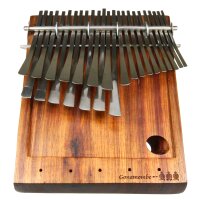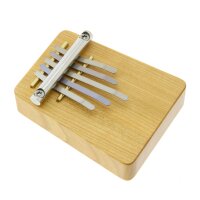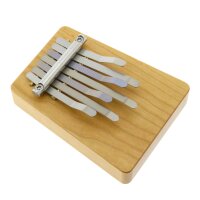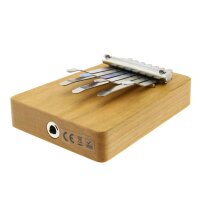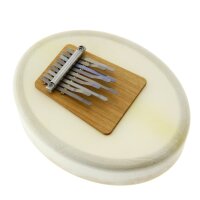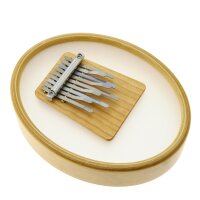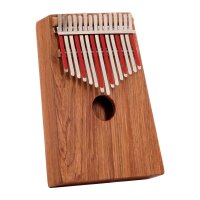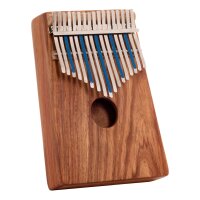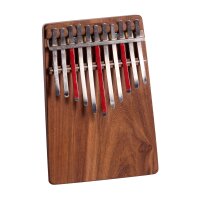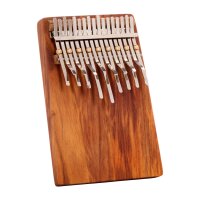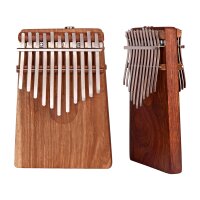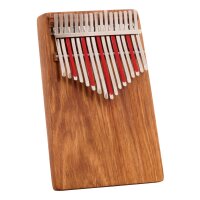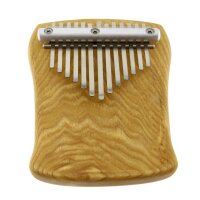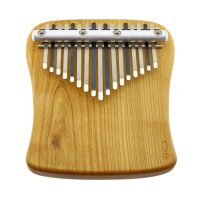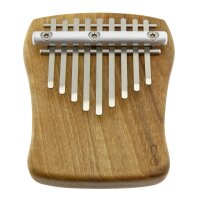Looking at the European museum catalogue for musical instruments MIMO (Musical Instrument Museums Online), one can find almost 170 musical instruments under the keyword “lamellaphones in Africa”. Thereby one is often very different from another one. All instruments belong to one category for which we (Non-Africans) commonly use the generic term “kalimba”. Who developed a new group of instruments out of this variety and made it possible to order them home just by mouse click? – Musical instruments originally played in African countries, but now successfully adapted to the Western scale?
One thousand and one Kalimbas
Kalimbas from 13 different African countries in total appear in the MIMO catalogue: Angola, Malawi, Cameroon, Zimbabwe, Tanzania, Nigeria, Congo, Mozambique, Namibia, Ivory Coast, Ghana, Senegal, and Gabon. But the list of those countries in which variations of the “kalimbas” are played, is still not complete. These instruments also exist in Uganda, Zambia, and Zaire. To those searching for more evidences of original kalimbas we suggest to have a look into the photographic archives of the International Library of African Music (ILAM). There are almost 100 photos under the keyword “mbira”, taken at the original places of these intruments. Very often the diverse regional names are registered: Mbira, Sansa or Zanza, Likembe, Kadongo, Nsansi, Malimba, Ulimba, Ringa, Timbrh, Lulimba, Ulimba, Kakolondondo or Madaku.
Even these regional terms, the usage of which rather depends on the people’s local languages than on the borders of a nation state, firstly provide only guidance to the kind of instrument. Here is an example: There are several variations or types of the mbira among the Shona in Zimbabwe. Among others there is the Mbira Dza Vadzimu with 22 to 28 metal tines which is played at religious ceremonies and weddings. Furthermore there are the Mbira Njari and the Mbira Matepe. Since the 1960ies the Mbira Nyunga Nyunga as played by Abraham Dumisani Maraire has also been known.
Ethnomusicologist Gerhard Kubik describes the wide-spread “kalimba” type Likembe: These instruments are said to have been spread by commercial travelers and migrant workers from Central African areas (Zaire) on their way to Angola, Zambia, Uganda, and Tanzania. They are characterized by their box-shaped resonating body which is cut out on the upper part of the back side. This recess is necessary to fix the tines by means of an iron clamp through holes and wire on the back side. There are innumerable versions of this kalimba type.
Kalimbas at the toy section
The development of a kalimba which became attractive for usage in Europe and North America has been awarded to ethnomusicologist Hugh Tracey. Tracey lived on his brother’s tobacco farm in present-day Zimbabwe since 1921, and for decades he traveled through several countries in Southern and Central Africa. Right from the start this young man from Devonshire in England was interested in the language and culture of the local population, the Shona. Tracey appreciated the music of the Shona very much and treated it as cultural property which needed to be kept and recorded. The material which he gathered during his trips as a collector has been preserved and digitalized until today. Tracey studied the various kalimba types in Africa in detail for several years and collected all kinds of material about them. So he knew the different tunings and designs and finally began to make single instruments himself.
Tracey experimented with various wood species and sizes. In 1954 he founded the company “African Musical Instruments” (AMI) and marketed the first kalimbas in Europe and the US. But before the first standardized musical instrument for the European and US American market was ready, they made about 100 prototypes. The first 10.000 kalimbas ended up in the department stores’ toy sections of all places in the US, because they were bought and sold by a toy company. This is an indication of the dubiety about who would at all be interested in these instruments.
The kalimba becomes pop
It was a test of patience to make the kalimba as a musical instrument known in Europe and the US. Hugh Tracey contributed to its diffusion on his lecture tours outside of Africa. The music revue “Wait a Minim” of his sons Andrew and Paul toured through Europe, Africa and North America for six years. In an interview with Mark Holdaway (kalimbamagic.com) Andrew Tracey remembers how difficult it was to draw people’s interest in the kalimba. It took an awful long time for people in England to take to something new. Primarily it had been Andrew Tracey’s concern with “Wait a Minim” to generally make African music known. There had been only a few songs with kalimba in this show. But nonetheless the interest in this instrument got to a stage where a British piano manufacturer took notice of the kalimba and took over the marketing of it in Great Britain.
In retrospect there was a first boom for the kalimba in the 1960ies. Maurice White, member of the band Earth, Wind, and Fire, played the kalimba and made it known to a wider public. The Hugh Tracey Kalimbas became established as hybrid musical instruments which combined elements from African musical cultures with current musical standards from Europe or the US: The kalimbas made for the Western market were tuned diatonically. In the music of Thomas Mapfumo the mbira has been and still is a permanent feature. When he gained attention worldwide in the 1980ies, the mbira or kalimba was brought again into public focus:


